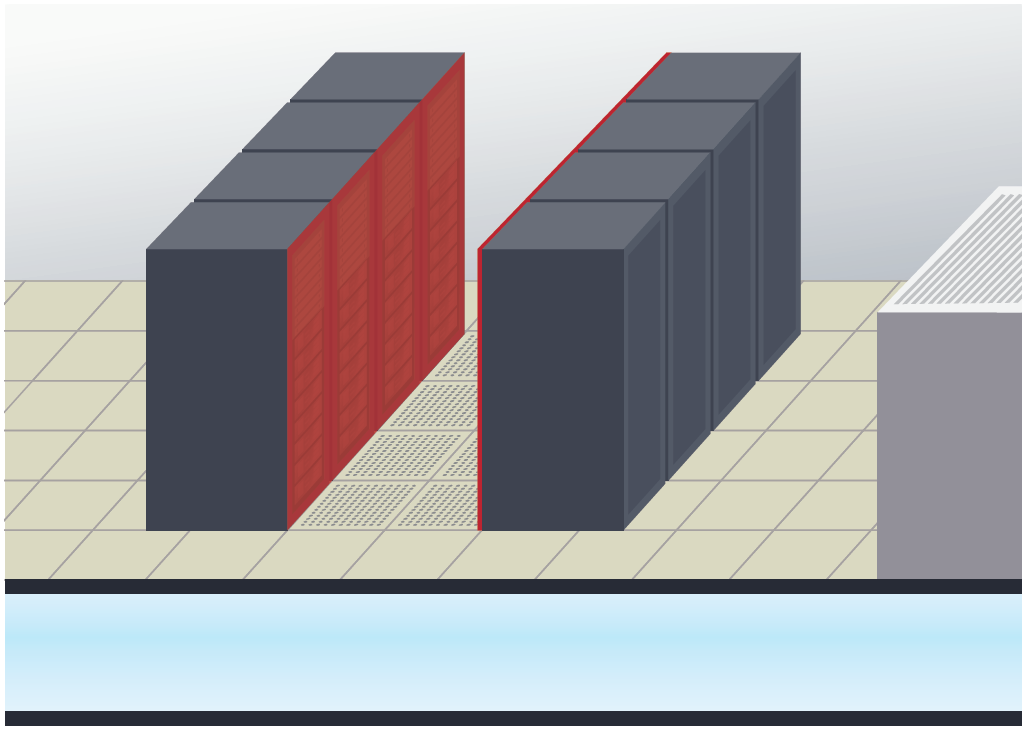Airflow Management in Focus: The Rack14 min read

With so many variables affecting airflow within a data center, it can be daunting to know where to start and how to get the most out of airflow management improvements. The 4 R’s of Airflow Management™, developed by Upsite Technologies, is a holistic methodology for identifying and implementing changes to optimize the data center’s cooling infrastructure and realize energy savings.
The 4 R’s are: the Raised Floor, the Rack, the Row, and the Room. Today, we’ll be giving a brief overview of the Rack level.
What is Rack Airflow Management?
Rack airflow management (AFM) refers to managing airflow through the vertical plane across the face of IT equipment intakes. Sealing the open space of a rack often provides the greatest return on investment of any AFM effort, both in the ability to reduce hot spots and the ability to reduce energy consumption.
Rack AFM best practices include:
- Install blanking panels in every open U space
- Seal the space between mounting rails and sides of cabinets
- Identify IT equipment mounted to the back rails, such as switches that do not have ducted inlets to the face of the cold aisle, and correct with AFM products (SwitchFix)
- Identify IT equipment facing backwards, inlets facing the hot aisle and exhaust blowing into the cold aisle, and rotate equipment if possible
Example: Blanking Panels
The following images were created with computational fluid dynamics (CFD) analysis. CFD is a branch of fluid mechanics that uses numerical analysis and data structures to analyze and solve problems that involve fluid flows. The images below reveal both the importance of using blanking panels in general, and the importance of using blanking panels that effectively seal open U spaces.
In this model (Figure 1) with no blanking panels, 40% of the air flowing into servers is exhaust air that recirculated through the open U spaces.

Figure 1: CFD model showing a cabinet with no blanking panels
In this model (Figure 2) blanking panels with 1/16” gaps between adjacent blanking panels were installed in the open U spaces. 19% of the air flowing in two servers is exhaust air that recirculated through the small gaps between blanking panels.

Figure 2: CFD model showing a cabinet with blanking panels that have a 1/16” gap between adjacent panels
Finally, this model (Figure 3) shows how blanking panels with no gaps effectively seal the cabinet and prevent all exhaust air re-circulation.

Figure 3: CFD model showing a cabinet with blanking panels that don’t have a gap between adjacent panels
Expert Advice
Sealing gaps in the rack (both within and along the sides of cabinets) often provides the greatest return on investment of any airflow management effort, both in the ability to reduce hot spots and the ability to reduce energy consumption.
After making AFM improvements at the Raised Floor level, it is important to make adjustments to cooling unit controls at the Room level to optimize the cooling infrastructure and realize energy savings. This is referred to as cooling optimization.
Featured Resources
- [Blog] What You Need to Know About Rack Airflow Management
- [Blog] Blanking Panels: How Sealing Small Gaps Can Lead to Big Savings
- [White Paper] Two-Dimensional Computational Fluid Dynamics Analysis of Blanking Panel Solutions
- [Blog] A Case Study for Correcting Non-Compliant Data Center Airflow Patterns
- [Blog] Rack Airflow Management: More Than Just Blanking Panels
The industry's easiest to install containment!
AisleLok® solutions are designed to enhance airflow management,
improve cooling efficiency and reduce energy costs.
The industry's easiest to install containment!
AisleLok® solutions are designed to enhance airflow management,
improve cooling efficiency and reduce energy costs.







0 Comments